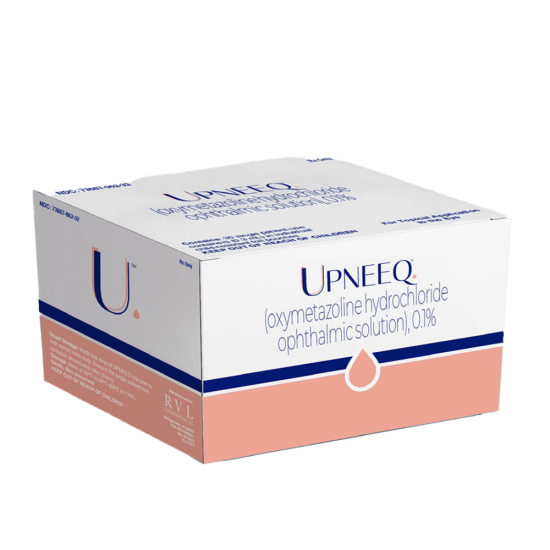
This medication is used to treat a certain eyelid condition (acquired blepharoptosis) that causes drooping upper eyelid(s). It belongs to a class of drugs known as alpha agonists. Oxymetazoline works by making a certain eyelid muscle get shorter and tighter (contract).
| Benefits |
|
|---|---|
| FAQs | What warnings and precautions are associated with UPNEEQ®?
Do not let the tip of the UPNEEQ® vial touch your eye or any other surface. This can help prevent eye injury or contamination. Each UPNEEQ® vial is for one-time use and should be discarded after being used. What are the most common side effects of UPNEEQ®? The most common adverse reactions with UPNEEQ® (occurring in 1-5% of patients) were eye inflammation, eye redness, dry eye, blurred vision, eye pain at the time of use, eye irritation, and headache. What should my doctor know about before prescribing me UPNEEQ®? Your doctor should review your full medical history before prescribing UPNEEQ®. Patients who use a certain class of antidepressant medication (monoamine oxidase inhibitors) should also be careful when using UPNEEQ®, as it may affect the way your body absorbs the medication. These are not all of the possible side effects of UPNEEQ®. Tell your doctor if you have any side effect that bothers you or does not go away. Call your doctor for medical advice about side effects. |
| Size | 0.3 mL |
| Brand | Upneeq |
Apply one drop of Upneeq in each affected eye as directed, once a day.
Each mL of Upneeq contains 1 mg of oxymetazoline hydrochloride, equivalent to 0.9 mg (0.09%) of oxymetazoline free base.








